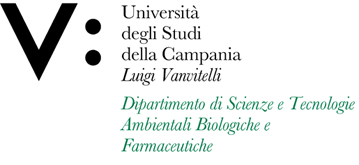Gaetano MALGIERI
Insegnamento di MONITORAGGIO DEGLI INQUINANTI
Corso di laurea magistrale in SCIENZE E TECNOLOGIE PER L'AMBIENTE E IL TERRITORIO
SSD: CHIM/02
CFU: 6,00
ORE PER UNITÀ DIDATTICA: 48,00
Periodo di Erogazione: Secondo Semestre
Italiano
| Lingua di insegnamento | ITALIANO |
| Contenuti | Il corso riguarda le modalità di trasferimento e trasformazione degli inquinati nell’ambiente nonché le tecniche di rivelazione. |
| Testi di riferimento | Chimica fisica per le scienze ambientali; autori Camillo Dejak , Demetrio Pitea, Claudio Rossi |
| Obiettivi formativi | Apprendimento delle modalità di trasferimento e di trasformazione di un inquinante nell’ambiente nonché sulle tecniche di analisi disponibili per il loro riconoscimento. |
| Prerequisiti | Conoscenze e abilità fornite dal corso di Chimica generale ed inorganica. |
| Metodologie didattiche | Il modulo tenuto dal Dott. Stefano Salvestrini è articolato in 48 ore di lezioni frontali nelle quali verranno esposti i principi teorici del corso e verranno proposti e svolti svariati esercizi numerici per modellizzare la dispersione e la reattività degli inquinanti nei vari comparti ambientali |
| Metodi di valutazione | L’esame consta di una prova scritta preliminare riguardante esercizi di chemiodinamica da superare con almeno 18/30. Una volta superata la prova scritta, verrà eseguita una prova orale, da superare con votazione di almeno 18/30, durante la quale lo studente dovrà esporre i principali concetti affrontati nel corso e applicare le conoscenze acquisite alla risoluzione di casi studio. |
| Altre informazioni | Lo studente potrà avvalersi del materiale didattico (dispense, esercizi, ecc.) messo a disposizione sul sito web di Ateneo (sharepoint). |
| Programma del corso | Programma svolto dal dott. Stefano Salvestrini: |
English
| Teaching language | Italian |
| Contents | The course deals with the mode of transport and transformation of pollutants in the environment and their detection techniques. |
| Textbook and course materials | Chimica fisica per le scienze ambientali; autori Camillo Dejak , Demetrio Pitea, Claudio Rossi |
| Course objectives | Learning mode of transport and transformation of pollutants in the environment as well as the available analysis techniques for their identification. |
| Prerequisites | Knowledge and skills furnished by the course of General and Inorganic Chemistry. |
| Teaching methods | The module of Dr. Stefano Salvestrini consists of 48 hours of lectures in which the theory and associated numerical exercises will be exposed and solved for modeling transport and reactivity of pollutants in different environmental phases. |
| Evaluation methods | The exam consists in passing a preliminary written test regarding chemiodynamics exercises, with a vote of at least 18/30. Once passed the written test, an oral test will be carried out, to be passed with a vote of at least 18/30, during which the student will have to present the main concepts addressed in the course and apply the knowledge acquired to the resolution of case studies. |
| Other information | The student can make use of the teaching material (lecture notes, exercises, etc.) made available on the University website (sharepoint). |
| Course Syllabus | Course program covered by Dr. Stefano Salvestrini |








